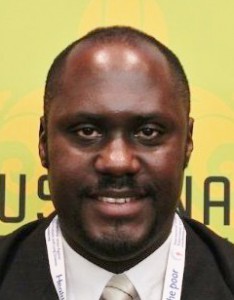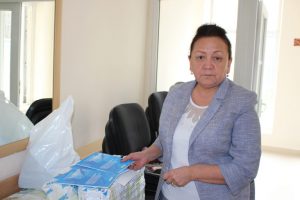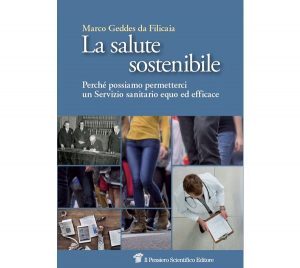Corruption is 'the abuse of entrusted power for private gain'[i]. Transparency International estimates a loss of 15 billion € per year due to corruption practices[ii] bound up with medical corruption in Germany alone. This definition includes many different kinds of corruption in health care and medicine. It is understood as a global phenomenon and exists all over the world including Germany[iii]

By Christiane Fisher MD MPH PhD
Medical Director, No Free Lunch, Germany MEZIS
Member of the German Ethics Council
fischer@mezis.de
Corrupt Medical Practices in Germany
In the developing world corruption is felt at every moment in life. Often, a prerequisite to good, or even any care is a bribe. In industrialized countries such as Germany such open forms of corruption are not often seen. As insurance coverage is compulsory and therefore close to 100% (87.5% are publicly, 12.5% privately insured), out of pocket payment for healthcare is rare. This may be why corruption practices here are rather subtle and hidden. Nevertheless, corruption creates major problems for the healthcare system, for patients and for society. This article will highlight some corruption practices in Germany.
Illegal or illegitim
Doctors work in Germany either in hospitals or in medical practices. Outpatients are commonly treated in a medical practice, which is often the first place patients go to for care. A medical practice usually has a single or a few doctors of the same post-graduation specialization: such as primary care physicians, pediatricians, surgeons or radiologists.
Corruption practices may involve a direct and explicit money flow or bribes. Since 2015 this is banned in Germany for all types of doctors, pharmacists and physiotherapists under the criminal code (§299 and b StGB). As in 87.5% of the cases public insurances (and in 12.5 % private insurances) pay, how do corruption practices still take place? Examples of these corruption practices are allocations given by fellow doctors to specific hospitals or medical supply stores or other care for referring patients to them. Bussmann analyses this corruptive practice as very common. He found out that even though most doctors know that these allocations are illegal, 40% see the rule only as voluntary to follow.[iv]
In addition to these illegal corruption practices there are also illegitim aspects of corruption, such as the acceptance of benefits or the granting of undue advantages which penetrate medical practice. As they won’t be made illegal they will continue to exist. These illegitim faces of corruption involve implicit undue advantages aiming to influence physicians’ prescribing behavior, such as gifts, inappropriate remuneration for speakers or food invitations.
How to increase the market share of “me-too” drugs?
The most effective (and corruptible) instruments to change prescribing patterns are pharmaceutical representatives who promote pseudo-innovative medicines which are more expensive but offer no therapeutic progress compared to the old therapeutic standard. Boundaries between information and promotion are intentionally blurred, and pseudo-innovative drugs are promoted with pseudo-information. Through this misleading health information prescribing patterns are changed and so important health resources are wasted. According to estimates 15,000 pharmaceutical representatives visit 20 million practices and hospitals in Germany every year, advertise their products, bring their gifts and remunerate doctors for post marketing surveillance studies (PMSS). They treat doctors to lunch or dinner and pay participation and travel fees for Continuing Medical Education programmes (CMEs).[v]
One example of such a pseudo-innovative drug is Inegy® (ezetimib&simvastatin fixed dose combination), a medicine to treat familiar hypercholesterolemia. However, Kastelein et al found out that the fixed dose combination of ezetimib & simvastatin does not result in a therapeutic progress, as compared with simvastatin alone.[vi] The price difference by contrast is remarkable, the pseudo-innovative Inegy® is 14 times costlier. While the price for 100 tablets of Inegy® in Germany is 224.65 €, 100 tablets of the generic version of the at least equally effective simvastatin (20 mg) are available for 18.03 €.
Drug promotion
In Germany direct to consumer advertisement (DTCA) of prescription drugs is illegal and pharmacies dispense prescription drugs only with a doctor’s prescription. As frequent use of pseudo-innovative information / promotion from pharmaceutical representatives is associated with increased prescribing costs[vii], the role of pharmaceutical representatives in drug promotion is most relevant for the marketing strategy of the pharmaceutical industry. Logically they see it as a major problem that nearly half of prescribers restrict pharmaceutical representatives’ access.[viii]. In Germany alone 77% (n=160) of doctors are seen weekly, 19% (n=39) even daily by pharmaceutical representatives.[ix]
Post-marketing surveys as a marketing instrument
In theory, post-marketing surveys are observational studies meant to systematically collect knowledge about safety, effectiveness, benefits and adverse side-effects of newly registered drugs. However the reality is different. One corruptive strategy in Germany to change prescription behavior with post marketing studies are ‘Anwendungsbeobachtungen’. They are company run post marketing surveys. However in reality they are more an alternate drug pricing mechanism designed to increase the market share by creating awareness for new and expensive drugs and therefore to substitute the newer, more expensive drug for a cheaper, equally effective treatment. Beatrice et al found out that only 58 % of 330, 000 Anwendungsbeobachtungen were performed with medicines that had been authorized within the past 5 years; 68 % of the drugs in the Anwendungsbeobachtungen were older than 5 years, and 19 % even older than 19 years[x]. As Transparency International examined, between 2008-2010 half a million patients and 126,764 doctors participated, costs were assessed half a million € per ‘Anwendungsbeobachtung’, each doctor was paid in average 19.000 €.[xi]
Drug samples influence prescribing patterns
The same is the case for drug samples. Doctors with access to drug samples chose unadvertised drugs significantly fewer times than physicians without access to samples, as Adair and Holmgren have shown. Therefore the influence of drug samples on prescribing patterns needs to be interpreted as part of this biased information and therefore as a corruptible instrument too.[xii]
How continuing medical education programmes are misused
As for the continuing medical education (CME) programmes for doctors that are run or sponsored by pharmaceutical companies, MEZIS estimates that in the majority of cases companies ensure that the “right” topics are covered aiming also to use CMEs to change prescribing patterns. Medical speakers often receive inappropriate remuneration. Some even have their slides provided by sponsors.
Why do doctors attend these biased CME programmes? Participating doctors usually pay a fee for producer-independent CMEs, and pay for their own travel and food. However, in company-oriented CMEs doctors are treated to lunch or dinner and their participation and travel fees are paid for by the company. Unsurprisingly, advertising for costlier, pseudoinnovative drugs replaces objective information. To fund attending doctors more than travel costs and conference fees is not in concordance with §32 of the German Medical Association’s Professional Code of Conduct [xiii]; nevertheless, it is done rather regularly.
An ethical medicine is possible
Changes in practice and policy include an increase of transparency, such as the US Physicians Payment Sunshine Act [xiv], and access to independent information and independent doctors’ initiatives, such as No Free Lunch Germany (MEZIS).
The aim of MEZIS is to tackle corruption practices in Germany:
- MEZIS fights the ubiquitous influence and unwarranted power of the pharmaceutical industry in healthcare. MEZIS aims not to welcome pharmaceutical representatives nor gifts in their hospitals and practices, and does not use samples.
- MEZIS raises awareness among fellow doctors and medical students that accepting pens, food, trial sponsorship, travel expenses and remuneration for post marketing surveillance studies (PMSS) makes one’s prescribing habits vulnerable to influence.
- MEZIS demands a clear prohibition of influencing and corruption in the regulations of medical professionals.
- MEZIS promotes producer-independent information and Continuing Medical Education programmes (CMEs) as well as medical software that is free from advertising. The medical chamber of Berlin has withdrawn CME points for an industry sponsored training programme.
- MEZIS advocates to ban corruption practices through the criminal code. Our advisory opinion is merged into the draft law.
- MEZIS is part of the worldwide “No free lunch”- network. This shows that an ethical medicine is possible, which builds on a trustful, equitable and healthy relationship between doctors and patients.
References
[i] Transparency International. FAQs on corruption [Internet]. 2013 [cited 2018 March 8].
[ii] Transparency International. Transparenzmängel, Korruption und Betrug im deutschen Gesundheitswesen – Kontrolle und Prävention als gesellschaftliche Aufgabe. 2008, S. 5. [cited 2018 March 8].
[iii] Fischer C. Corruption in healthcare – a problem in Germany, too. Indian Journal of Medical Ethics. 2014;11(2). [cited 2018 March 8].
[iv] Bussman KD. Improper collaboration in health care by “assignment for consideration”. Martin-Luther-University-Halle-Wittenberg: Economy Crime and Research Centre; Berlin. 2012. German.
[v] [cited 2018 March]. Available from:www.mezis.de
[vi] Kastelein JJ, Akdim F, Stroes ES, Zwinderman AH, Bots ML, Stalenhoef AF et al. Simvastatin with or without ezetimibe in familial hypercholesterolemia. N Engl J Med. 2008 Apr 3;358(14):1431-43. [cited 2018 March 8].
[vii] Caudill TS, Johnson MS, Rich EC, McKinney WP. Physicians, pharmaceutical sales representatives, and the cost of prescribing. Arch of Fam Med. 1996;5:201-6.
[viii] Staton T. How can pharma reps score face time with doctors? [Internet]. Fierce Pharma. 2013 Aug 13 [cited 2018 March 8].
[ix] Lieb K, Brandtönies S. A Survey of German Physicians in Private Practice About Contacts with Pharmaceutical Sales Representatives, Dtsch Arztebl Int 2010; 107(22): 392-8. [cited 2018 March 8].
[x] Beatrice K, von Jeinsen G, Sudhop T. A 1-year cross-sectional analysis of non-interventional post-marketing study protocols submitted to the German Federal Institute for Drugs and Medical Devices (BfArM). Eur J Clin Pharmacol. 2013 Jul; 69(7): 1453–66.
[xi] Transparency International. Forschung oder Korruption? Ludwig Boltzmann Institut. Newsletter Feb 2015 Cr. 134 Forschung oder Korruption? [cited 2018 March 8]
[xii] Adair RF,A-t. Holmgren LR. Do drug samples influence resident prescribing behavior? A randomized trial. Am J Med. 2005 Aug;118(8):881-4.
[xiii] Medical law: (Muster-) Berufsordnung für die in Deutschland tätigen Ärztinnen und Ärzte (Stand 2011). – MBO-Ä 1997 in der Fassung der Beschlüsse des 114. Deutschen Ärztetages 2011 in Kiel [(Model) Code of Conduct for doctors working in Germany (as of 2011)-MBO-A 1997- as amended by resolutions of 114 German Doctors’ Day 2011 in Kiel] [Internet]. 2013 Jan 29; [cited 2015 Feb 1]. [cited 2018 March 8].
[xiv] Library of Congress (Thomas.gov). Physician Payments Sunshine Act of 2009. 111th Congress (2009-2010) Senate bill.301. [cited 2018 March 8].












